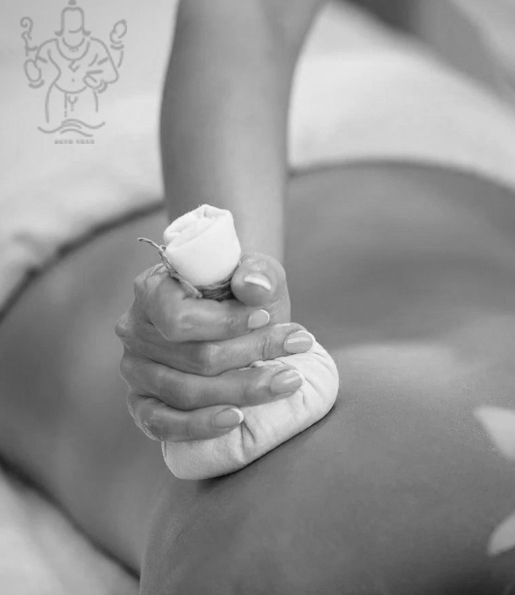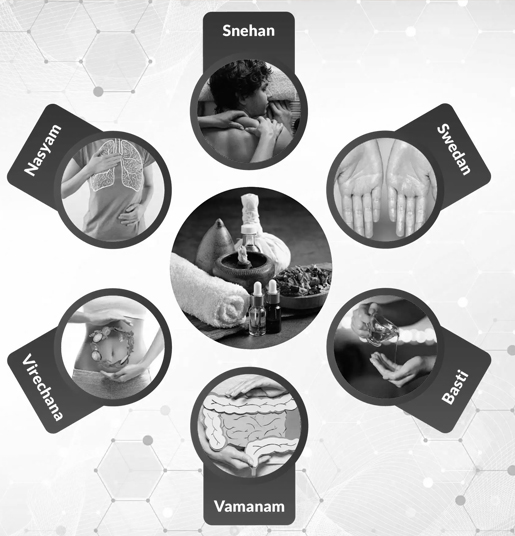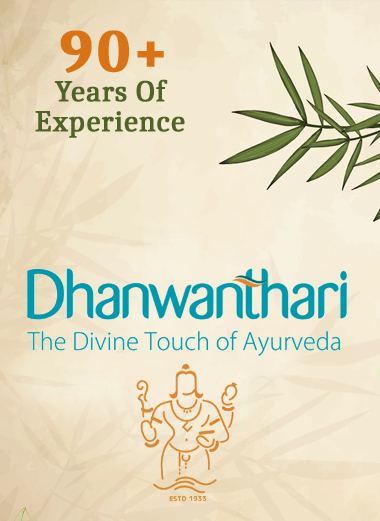PANCHAKARMA, A Practise in Ayurveda
ABOUT
Panchakarma
PANCHAKARMA, a practise in Ayurveda, entails five therapies that aid in body detoxification by removing toxins that have accumulated in the body as a result of pollution, improper eating habits, lifestyle choices, and mental stress. In order to keep the three doshas of VATA, PITTA, and KAPHA in balance, panchakarma is also helpful. The type of elimination is chosen by the doctor after he or she evaluates the patient's health and the severity of the sickness.
Therapeutic approaches are categorised in Ayurveda as:
The purifying treatments among them are categorised into five groups called Panchakarma. Panchakarma, which essentially means detoxification or elimination of toxins from the body, is the thorough cleansing procedure, unique to Ayurveda, that enables the body to release excess doshas and poisons from its cells and expel them. Although the human body is thought to be a fantastic, wise, and all-natural healing system capable of regenerating itself, the creation of toxins diminishes that natural capacity. Therefore, Panchakarma is essential to this rectification.


TYPE
The first stage of the panchakarma regimen consists of Ayurvedic massages, primarily oleation and sudation therapies like Abhyanga, Podikkizhi, Elakkizhi, etc., Snehapana utilising medicated ghee, and various internal herbal remedies. The preparation of the patient for detoxification may take 5 to 7 days, and the doctor determines the type of Panchakarma to be provided based on the patient's ailment or dosha imbalance. Panchakarma comprises:
Panchakarma comprises
NASYAM (Nasal Medication)
The advantages of nasya include:
ऊर्ध्व जत्रु विकारेषु विषेशान्नस्यमिष्यते । नासा हि शिरसो द्वारं तेन तद्व्याप्य हन्ति तान् ॥
VAMANA (Therapeutic Emesis)
These are some advantages of Vamana:
कफे विद्यात् वमनं संयोगे वा कफोल्बणे ।
VIRECHANA (Therapeutic Purgation)
The advantages of Virechana include:
कषाय मधुरैः पित्ते विरेकः कटुकैः कफे स्निग्धोष्ण लवणैर्वायौ ।
VASTHI (Medicated Retention Enema)
The advantages of vasti include:
वातोल्बणेषु दोषेषु वाते वा वस्तिरिष्यते ।
RAKTHAMOKSHAM (Bloodletting Through Venous & Capillary Route)
दुष्टरक्तापगमानात् सद्यो रागरुजां शमः ।
The advantages of raktamoksha include:
प्रछानम् पिण्डिते वा स्यात् अवगाढे जलौकसः ।
त्वक्स्थे अलाबु घटी शृङ्गं शिरैव व्यापके असृजि ।
वातादिधाम वा शृङ्ग जलौक अलाबुभिः क्रमात् ॥

